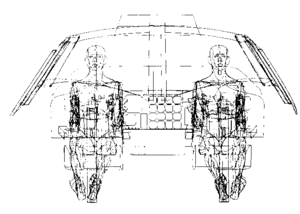The Face of a Refusing Machine: Difference between revisions
No edit summary |
mNo edit summary |
||
| Line 6: | Line 6: | ||
|Description=As hundreds of amateur videos of military aircrafts and drones flying over Syria appear online everyday, this work attempts to construct a perspective on aerial power where politics, technology and pop culture meet. Starting with a rare videotape of an Israeli drone hovering over the Lebanese Southern village of Qana in 1996 and ending in the Syrian outskirts of Raqqa 2015, this work combines storytelling and archival footage, together with drawings of early aircraft cockpit designs, computer graphics and toy commercials from the 1960’s to draw a link between the horrors of aerial warfare and the cockpit as a space that dictates and responds to particular corporal attitudes and functions. | |Description=As hundreds of amateur videos of military aircrafts and drones flying over Syria appear online everyday, this work attempts to construct a perspective on aerial power where politics, technology and pop culture meet. Starting with a rare videotape of an Israeli drone hovering over the Lebanese Southern village of Qana in 1996 and ending in the Syrian outskirts of Raqqa 2015, this work combines storytelling and archival footage, together with drawings of early aircraft cockpit designs, computer graphics and toy commercials from the 1960’s to draw a link between the horrors of aerial warfare and the cockpit as a space that dictates and responds to particular corporal attitudes and functions. | ||
}} | }} | ||
(proof read) | |||
Revision as of 15:40, 29 May 2017
| The Face of a Refusing Machine | |
|---|---|
| Creator | Sara Hamadeh |
| Year | 2017 |
| Bio | Sara Hamadeh (LB) is an artist and researcher with a background in film studies. Her current research seeks to offer a critical reading of images of war together with the politics of their production and distribution online. |
| Thumbnail | |
As hundreds of amateur videos of military aircrafts and drones flying over Syria appear online everyday, this work attempts to construct a perspective on aerial power where politics, technology and pop culture meet. Starting with a rare videotape of an Israeli drone hovering over the Lebanese Southern village of Qana in 1996 and ending in the Syrian outskirts of Raqqa 2015, this work combines storytelling and archival footage, together with drawings of early aircraft cockpit designs, computer graphics and toy commercials from the 1960’s to draw a link between the horrors of aerial warfare and the cockpit as a space that dictates and responds to particular corporal attitudes and functions.
(proof read)

